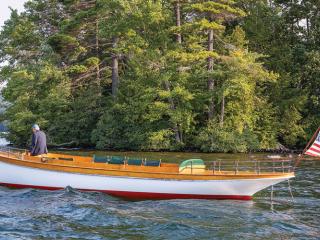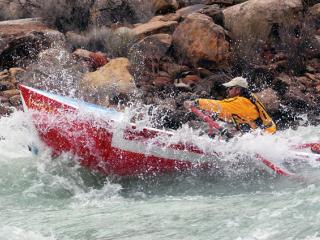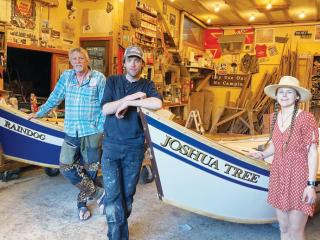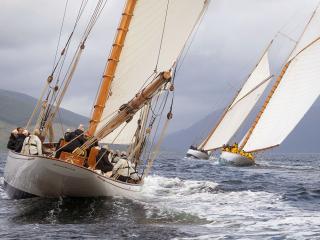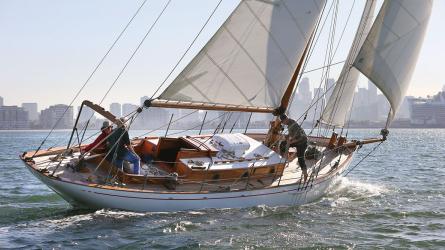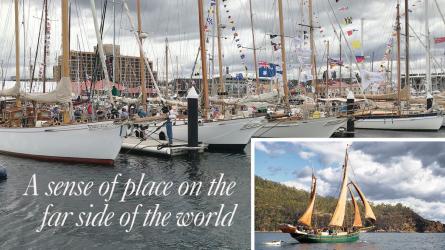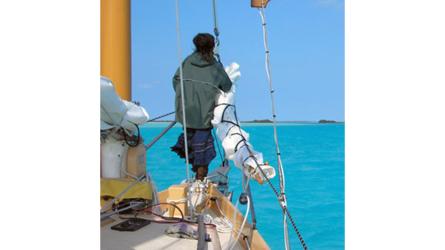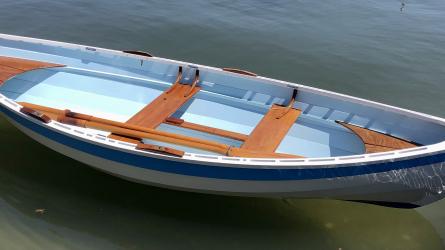November / December 2022
CLARA
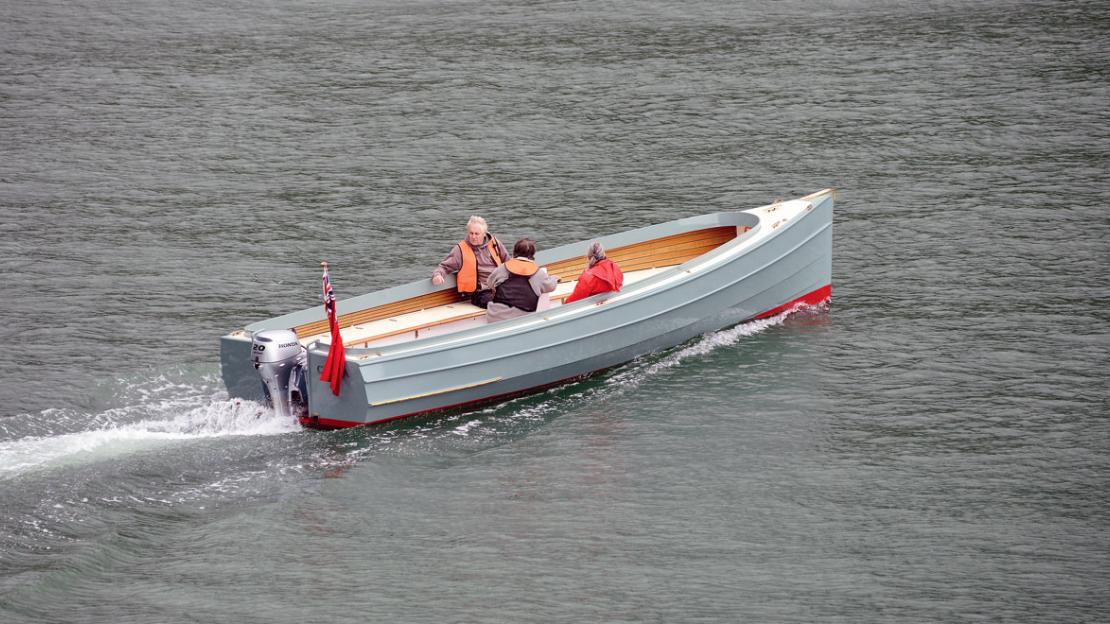
The wide stern gives LDL boats their stability. CLARA has more tumblehome than Nigel’s previous designs to avoid a boxy appearance. Although she is seen here with a gasoline-powered outboard, the design is perfectly suited to electric propulsion.
As I rowed up the River Dart in Cornwall, England, in my Western Skiff early one summer morning, I thought there was something incredibly appropriate about going to photograph the latest Nigel Irens design in a Nigel Irens–designed boat. Of course, my 14' skiff was a far more humble affair than the new 26' motor launch he was testing that day, but I liked to think there was a family resemblance between the two boats, if only in those slim, easily driven hulls and plumb stems. Nigel once told me that most yacht designers only ever design one boat, reproducing the same concept in many different guises, so the relationship between Ellen McArthur’s record-breaking trimaran B&Q, the new launch, and my own diminutive skiff may not be so tenuous after all.
But more revealing than the similarities between the two boats were their differences. Designed in 1996, the Western Skiff was Nigel’s first foray into CNC-cut plywood boats, largely led by his then-assistant and collaborator, Ed Burnett (1971–2014; see WB No. 268), and was a relatively crude affair designed for home construction. The designers made a virtue of the fact that none of the joints were beveled, including the plank laps; instead, the plank seams were filled with oversized thickened-epoxy fillets for strength. For an amateur builder putting together a dinghy that required only small quantities of epoxy, it made perfect sense and meant the Western Skiff was remarkably easy to build.
CAD and CNC technology have come a long way in the past 26 years, however, and CLARA, as the new boat is called, embodies that change. For a start, CNC-cut boats were once considered the province of kit boats for amateur construction, but the technology is being increasingly embraced by professional boatbuilders who appreciate the time saving not just for one-offs but even for production boats. The method now puts wooden boats on par with or cheaper than fiberglass production boats—as evidenced by Swallow Yachts’ return to wood for their latest offering, the Whisper 300 (see WB No. 287). And there are other, equally surprising, advantages to the CAD and CNC approach, as we shall see.
To read the rest of this article:
Click the button below to log into your Digital Issue Access account.
No digital access? Subscribe or upgrade to a WoodenBoat Digital Subscription and finish reading this article as well as every article we have published for the past 50-years.
ACCESS TO EXPERIENCE
2-for-1 Print & Digital Subscription Offer
For this holiday season, WoodenBoat is offering our best buy one, get one deal ever. Subscribe with a print & digital subscription for $42.95, and we’ll give you a FREE GIFT SUBSCRIPTION to share with someone special.
1 YEAR SUBSCRIPTION (6 ISSUES)
PLUS ACCESS TO MORE THAN 300 DIGITAL BACK ISSUES
PRINT+DIGITAL $42.95
Subscribe
To read articles from previous issues, you can purchase the issue at The WoodenBoat Store link below.
 Purchase this issue from
Purchase this issue from
